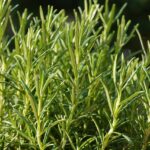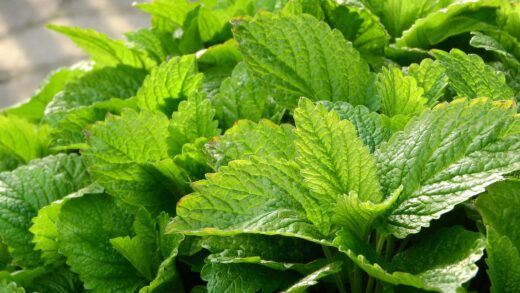The pruning and cutting back of the American tulip tree

Pruning an American tulip tree should be approached with a light hand and a clear purpose, as this is a species that naturally develops a strong, graceful structure without the need for extensive intervention. Unlike shrubs or fruit trees that require regular, intensive pruning to maintain shape or encourage production, the primary goals for pruning a tulip tree are to ensure its long-term health, safety, and structural integrity. Most pruning should be done when the tree is young to establish a good framework, after which mature trees should require only occasional maintenance to remove dead or damaged wood. Understanding when and how to make the proper cuts is key to preserving the tree’s majestic form and avoiding unnecessary damage.
The ideal time to perform any significant structural pruning on an American tulip tree is during its dormant season, typically in the late winter or very early spring before the buds begin to swell. Pruning during this period has several advantages. First, the absence of leaves allows for a clear view of the tree’s entire branch structure, making it much easier to identify any problems such as crossing branches, competing leaders, or weak attachments. Second, because the tree is dormant, the pruning cuts will cause minimal stress. Finally, pruning just before the spring growth flush allows the tree to begin the process of sealing the wounds quickly and efficiently as soon as it breaks dormancy.
For a young tree, the first few years after planting are the most critical for pruning. The main objective during this time is to establish and maintain a single, dominant central leader. The central leader is the main upright trunk that forms the vertical axis of the tree. If two or more competing leaders (known as co-dominant stems) are allowed to develop, they will form a weak, V-shaped attachment point that is highly susceptible to splitting and failure as the tree grows larger. To correct this, the weaker or less well-placed leader should be removed completely, allowing the remaining stem to establish clear dominance. This single act is one of the most important contributions you can make to the tree’s future structural stability.
In addition to establishing a central leader, pruning a young tree should also focus on selecting and developing well-spaced scaffold branches. These are the main branches that will form the primary structure of the canopy. Aim to have branches that are spaced both vertically and radially around the trunk, avoiding large clusters of branches originating from the same point. Remove any branches that are growing at a very narrow angle to the trunk, as these also form weak attachments. Also, prune off any branches that are crossing or rubbing against others, as this can create wounds in the bark that serve as entry points for diseases. This early shaping will create a strong, open framework that requires very little corrective pruning later in life.
Once the American tulip tree is mature and has a well-established structure, routine pruning should be very minimal. The focus should shift entirely to maintenance and safety. This involves periodically inspecting the tree and removing any branches that are dead, diseased, or have been damaged in storms. This type of pruning, often called cleaning, can be done at any time of year, as you are simply removing dead tissue. Large, mature trees should be inspected by a certified arborist every few years to assess their health and safety, as working on large trees can be dangerous and is best left to professionals.
More articles on this topic
Proper pruning techniques
Executing a pruning cut correctly is vital to ensure the tree can heal the wound effectively. The tree does not heal in the same way humans do; instead, it seals or compartmentalizes the wound by forming protective layers of tissue around it. A proper cut facilitates this process. For removing small branches, a simple cut with sharp pruners or a saw is sufficient. However, for branches over an inch in diameter, the three-cut method should always be used to prevent the weight of the falling branch from tearing a long strip of bark from the trunk, which creates a large and difficult-to-heal wound.
The first step in the three-cut method is to make an undercut on the bottom of the branch, about 12 to 18 inches away from the trunk. This cut should go about a quarter of the way through the branch. The purpose of this undercut is to prevent the bark from tearing when the main cut is made. The second cut is made from the top of the branch, an inch or two further out from the undercut. You should cut all the way through the branch, which will now fall away cleanly without tearing the bark on the trunk, as the undercut will stop any potential rip.
The final, third cut is the most critical. This cut removes the remaining stub of the branch. It should be made just outside the branch collar, which is the slightly swollen area of wrinkled bark where the branch joins the trunk. The branch collar contains specialized cells that are responsible for closing over the wound. It is essential not to cut flush with the trunk, as this removes the branch collar and creates a larger wound that the tree will struggle to seal. Conversely, leaving too long of a stub will prevent the wound from sealing properly and the stub will decay, potentially introducing rot into the main trunk.
After making a proper pruning cut, it is generally not necessary or recommended to apply any wound paint or sealer. Research has shown that these materials do not prevent decay and can actually interfere with the tree’s natural compartmentalization process. The only tools you need are sharp, clean pruning shears, loppers, or a pruning saw. It is also good practice to disinfect your pruning tools between cuts, especially if you are removing diseased wood, to prevent the spread of pathogens from one part of the tree to another. A simple solution of 10% bleach or rubbing alcohol is effective for this purpose.
More articles on this topic
Avoiding common pruning mistakes
One of the most common and damaging pruning mistakes is topping a tree. Topping involves indiscriminately cutting the main vertical stems or large branches back to stubs, often with the misguided intention of reducing the tree’s height. This practice is extremely harmful to the American tulip tree. It ruins the tree’s natural form, and the large wounds created by topping cuts are highly susceptible to decay. Furthermore, topping stimulates the growth of numerous weak, fast-growing watersprouts just below the cuts. These sprouts are poorly attached and are much more likely to break in a storm than the original branches, making the tree more dangerous in the long run.
Another frequent error is removing too much of the canopy at one time. A general rule of thumb is to never remove more than 25% of a tree’s living canopy in a single year. The leaves are the tree’s food factories, and removing too many of them can severely stress the tree by robbing it of its ability to produce energy. This can lead to a decline in health and make the tree more vulnerable to pests and diseases. Any necessary pruning should be done gradually over a period of several years rather than all at once. This allows the tree to adjust to the changes without being pushed into a state of stress.
Pruning at the wrong time of year can also cause problems. While removing dead wood can be done anytime, major structural pruning should be confined to the dormant season. Pruning in the summer, after the leaves have fully expanded, removes a significant amount of the tree’s energy-producing capacity. Pruning in the early autumn is also discouraged, as it can stimulate new growth that may not harden off before winter. Sticking to late winter or early spring for major pruning tasks is the safest and most effective approach for the health of the tree.
Finally, using dull or improper tools is a mistake that can lead to poor outcomes. Dull tools will crush and tear the plant tissues rather than making a clean cut. These ragged wounds are much more difficult for the tree to seal and provide a rough surface where water and pathogens can collect. Always ensure your pruners, loppers, and saws are sharp and clean before you begin working. Using the right size tool for the job is also important; using small hand pruners on a branch that is too large will not only damage the tool but will also result in a poor quality cut.

















